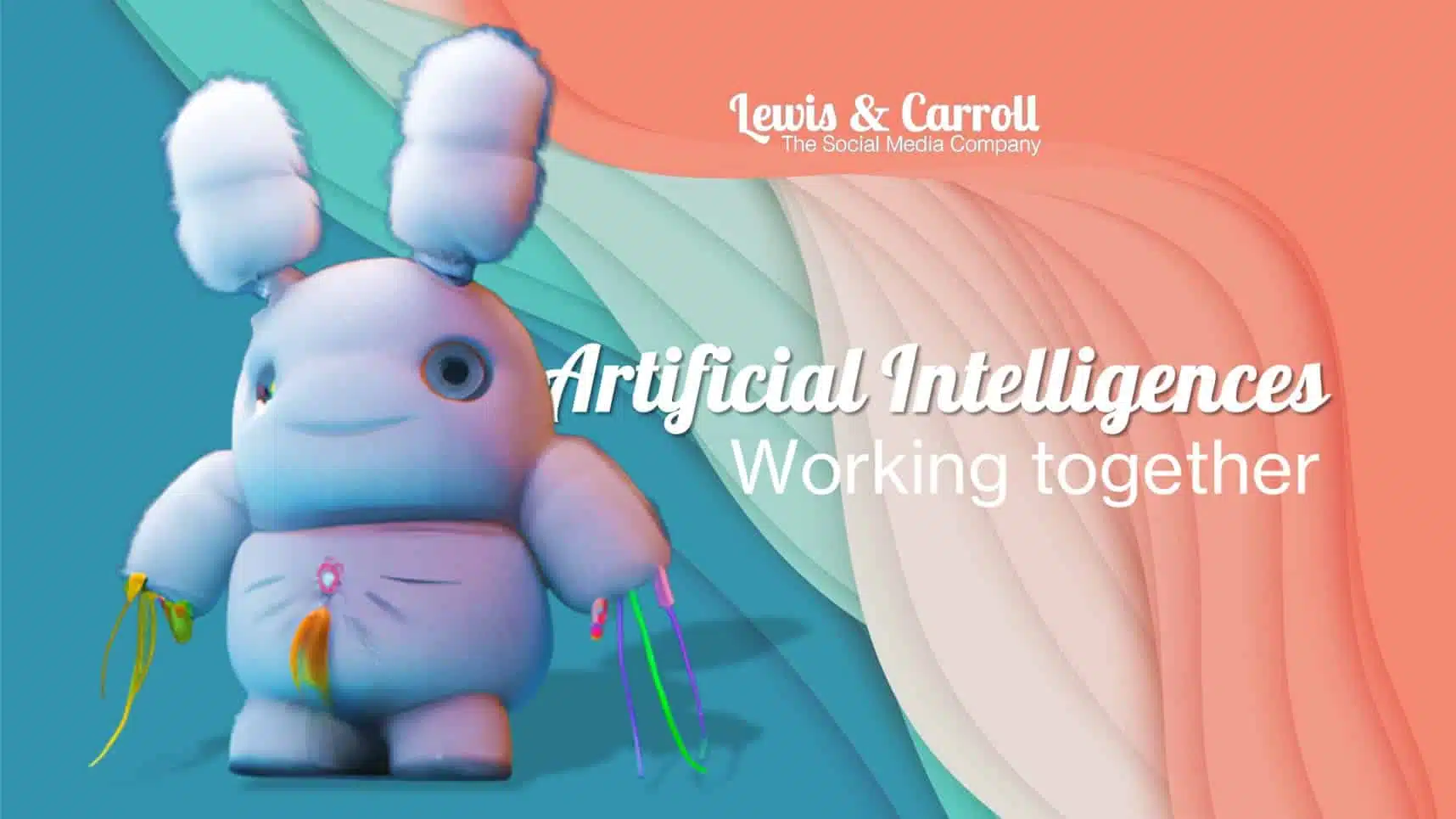- Artificial Intelligences work in our team. - 31 January, 2023
- The Great Digital Transformation - 21 April, 2020
- Opportunism or Empathy - 17 April, 2020
Artificial Intelligences work in our team.
Image by the Lewis & Carroll design team in collaboration with DALL-E and Midjourney.
In Lewis & Carroll, we have decided for some time now that Artificial Intelligences will be good friends, good collaborators, and important pieces in the development of our business and the evolution of our company.
This is a complex topic and a field that has a lot, but a lot, to explore. It is not easy to orient oneself in such a changing landscape where only the attitude and willingness to learn can take us to a good place.
In this article, we share with you some of what we have learned.
Let’s put it into context: there is not just one AI.
Speaking of Artificial Intelligence in the singular is talking about a technology that is not new, which has been developing since the 1950s and has evolved at different speeds since then, and has exploded in the last two years, particularly, I would say, in the last two months.
The dizzying evolution of the technology that underlies AI today puts so many diverse tools at our disposal in terms of its foundations and uses that it is difficult to understand its potential if we continue to speak in the singular. The first step is to assume that only if we speak in the plural will we begin to understand and take advantage of the enormous possibilities that each one implies.
Classifying AIs helps to understand what they can do for and with us.
Possibly for many of those reading this article what comes next will be outdated, but I still find it useful to present a simple and as practical as possible classification of the Artificial Intelligences “out there”.
Of the many criteria that could be used to group AI, we will take as a basis its cognitive capacity, in other words, its ability to simulate human mental abilities:
Level 1 AI:
This is where we place simple and standardized task automation systems. These AIs follow a set process, don’t learn new things, and don’t improve over time.
Level 1 (Reactive) AIs are used for simple medical diagnoses, routine financial analysis, or repetitive industrial processes, for example. They are suitable for automating routine and repetitive tasks such as air traffic control systems, GPS navigation assistants, massive data entry into databases, appointment management, and machine programming.
Level 2 AI:
This second level encompasses systems that learn from existing data in wide or narrow environments and improve their performance over time. This is where machine learning comes in.
Level 2 (Deliberative) AIs are used for analysis, pattern recognition, and classification of large sets of data. This includes facial recognition AIs, voice recognition, fraud detection systems, sales prediction systems, and market segmentation systems, among others.
For example, this is the AI used by e-commerce platforms for product recommendations, customer behavior data analysis, and dynamic pricing.
Domestic cleaning robots are based on Level 2 AI. Given the behaviors detected in some Roomba robots (which have been making headlines in recent months), this leads to an ethical debate that I will address in another article.






